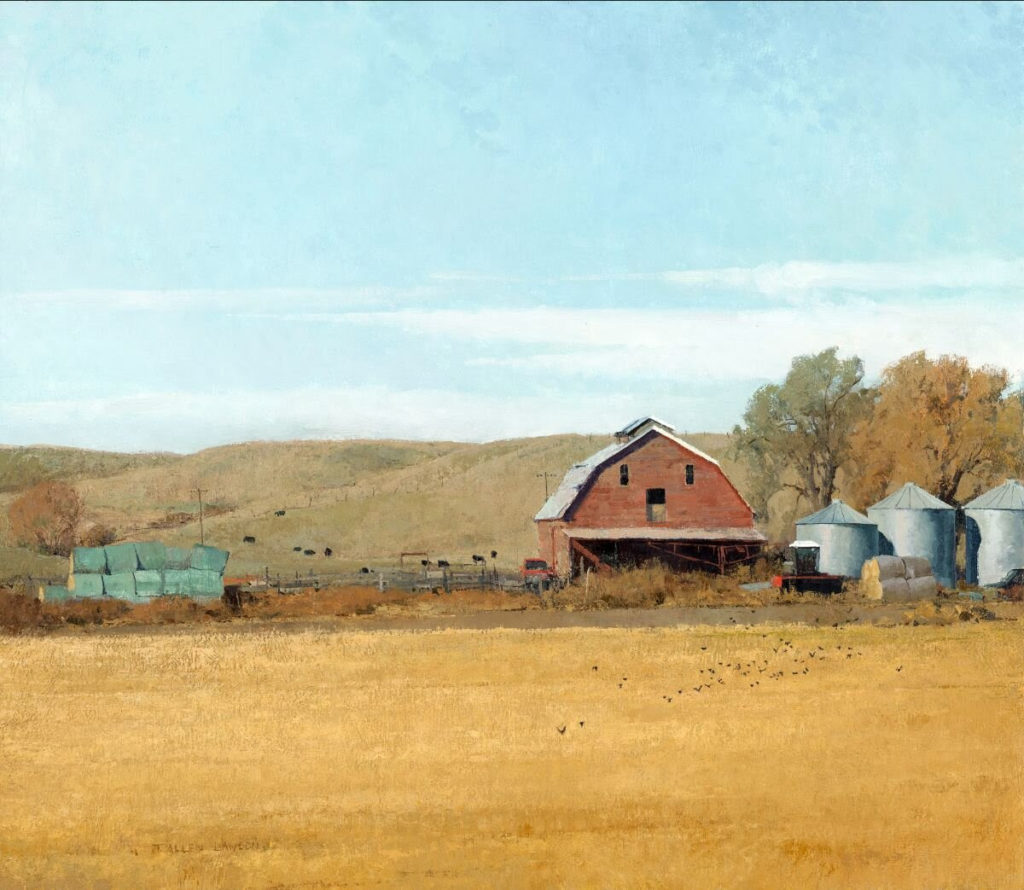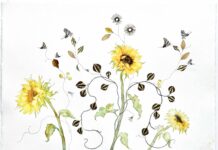There are only a handful of names that come to mind when you think of great American artists…Andrew Wyeth, Grant Wood, Georgia O’Keefe, Edward Hopper… It is easier to look back and pick out the few greats, because art history has done the work for us. But even fewer names come to mind when thinking of the current landscape of the American art world. Sometimes it is hard to know exactly what is good and what is just a flash in the pan. Many are reliant on the galleries and museums to help guide this – and although there are many galleries that show art geared to tourists seeking to appease anyone and anything – there are some that are more strict with the art they show and take that responsibility seriously.
More from Maxwell Alexander Gallery:
Not all art is easy to understand and usually that is the best kind of art to collect. The type of artwork that makes you see something different everyday, the painting that changes as the light outside changes, or the painting that keeps you endlessly wondering. It is never the painting that looks like a photo. It is always the art you have to get up close to – then step back and wonder to yourself, “How did they do that?” It is always the painting that gives you the butterflies in your stomach, the painting that so accurately captures a feeling or memory.
T. Allen Lawson Landscapes Now Available
T. Allen Lawson‘s full resume is too long to list here, but some highlights include winning basically every award possible, from the top award, the “Prix de West Purchase Award,” to his artwork appearing on the White House Christmas card. Museum and public collections range from the Smithsonian Institute in Washington DC to the Yale University Art Gallery, from the Denver Art Museum to the George W. Bush Presidential Library. Lawson currently has a solo exhibition of his paintings hanging in The Brinton Museum in Big Horn, Wyoming, which will be on display through September 2021.
A Turning Point
“The more realistic I tried to paint, the more abstract it became.” Lawson had a turning point in his artwork when he began a paintings series of tree bark. He used palette knives, wire, lead pencil, steel wool, mason brushes, manipulating the paint and layering to engage the viewer more with different textures. This new technique would become what Lawson is most known for – unique layering and paint manipulation, capturing scenes of America so accurate – yet simultaneously so abstract.
“The struggle for me is that I’m more interested in painting how the subject has affected me in an emotional way [rather than paintings exactly what I see].” Lawson works to convey that feeling more so than the subject, and he is consistently successful at capturing it.
The longer you look at an object, the more abstract it becomes, and, ironically, the more real. – Lucian Freud

Lawson’s “Cloud Dance” was inspired by the muted colors of fall with large clouds coming over the rolling hills east of Sheridan, Wyoming. Lawson explains while he was on location studying the landscape these clouds were coming from the west, moving eastward with constant movement. He states that he wanted to portray that movement, using the blue sky at the top as a starting point to find a rhythm coming down toward the hills. He achieves this by applying multiple layers of paint, so many layers you might not even see them all in the final piece, “I will put something down, knowing I’m going to fully alter or cover 90% in the finished painting – knowing some of the texture will show through,” Lawson states.
The painting was a constant puzzle, working the ground back and forth, adding in tress or slight color where needed, but ultimately not competing with the sky. The painting is all about the luminosity of the sky.

In Lawson’s “Blue Sky,” he sought to portray the feeling of ranch life. The feeling that you’re never finished with chores, never ahead, at best you are lucky to keep your head above water. Lawson uses a unique technique in this painting, splitting the canvas in half (with the sky being about the same size as the bottom half of the painting).
This is something most will try to avoid, but Lawson wanted to use this to gain a tranquil feeling with the arrangement of the objects. He also splits the colors; the autumn sky is a vibrant cooler blue color, while the foreground is painted in a warmer tone. He uses lateral perspective, with the sun being off to the left hand side, you’ll see colors shift in the sky from a more grey to a more vibrant blue. In the foreground the left hand side is brighter and more brilliant because it is backlit, as you move to the right the color gets a little warmer and not as intense.
“The way I observe life, if I see all the little different stuff going on in a yard or a field or meadow…. That’s in the back of mind, I’m not trying to duplicate that, but if I can manipulate the paint and include all the color variation in the field, I am closer to reality than I am to it, rather than if I tried to paint it as realistic as possible.”
– T. Allen Lawson
> Visit EricRhoads.com to learn about more opportunities for artists and art collectors, including retreats, international art trips, art conventions, and more.
> Sign up to receive Fine Art Today, our free weekly e-newsletter
> Subscribe to Fine Art Connoisseur magazine, so you never miss an issue







